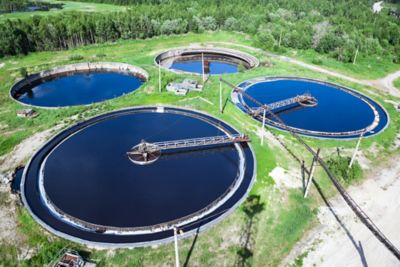Advanced carbon capture solutions in the cement industry
The cement industry faces a big challenge: meeting global infrastructure needs while reducing its impact on the environment.
One effective way to do this is through carbon capture, a process that captures and removes carbon dioxide (CO2) emitted during cement production.
Cement production is a major source of CO2 emissions, responsible for about 8% of the world's total. It's also the second most used resource globally after water, found in everyday infrastructure like bridges, highways, and buildings.
How can we make cement production ready for the future global requirements?
New innovations in carbon capture can help climate change mitigation. This involves capturing CO2 and either storing it underground or repurposing it for other uses, such as creating new materials.
As governments and companies focus more on sustainability, carbon capture technologies are gaining attention. These solutions not only help store CO2 but also offer ways to use it, making cement production cleaner.
Let's take a look at the advanced technologies that are transforming cement production. This article explains some methods for capturing CO2 coming from a cement plant and highlights innovative solutions.
The importance of carbon capture in the cement industry
Cement production releases large amounts of CO2 because of the burning of fossil fuels to generate the required heat to breakdown limestone into clinker.
Secondly during this breakdown extra CO2 is being released which is inherent to the chemical process.
This is why the cement industry is called an ‘hard-to-abate’ sector. The CO2 release is unavoidable as it is a byproduct of the chemical reactions which need to take place to produce cement.
This is a big environmental issue, and reducing global CO2 emissions from cement is crucial to limit the impact on climate changes. Cement CO2 capture helps solve this problem by capturing CO2 before it enters the air. This can make a big difference in lowering the industry's overall carbon emissions.
CO2 capture technologies for cement industry
There are several technologies that can capture CO2 during cement production. These include amine scrubbing, cryogenic separation, novel solvents, and membrane systems. Each has its benefits, and we’ll explain them in simple terms below.
Amine Scrubbing
Amine scrubbing is one of the most common methods for capturing CO2. It uses chemicals called amines to absorb CO2 from the gases released during cement production.After the CO2 is captured, it's seperated from the amines using steam.
The pure CO2 can then be further compressed for liquifaction or pipeline transportation.
This method is reliable and works well in many industries, including cement production.
Cryogenic Separation
In cryogenic separation, gases from cement production are first compressed and then cooled down to very low temperatures.
At these pressure and temperature, CO2 turns into a liquid, making it easy to separate from the other gases.
The liquid CO2 can then be stored or used for other purposes.
This method is highly efficient and works especially well in industries like cement, where the CO2 concentration of the gas is relatively high.
Novel Solvents
New types of solvents have been developed to capture CO2 more efficiently. These novel solvents are specially designed for use in cement plants, offering better absorption of CO2 and higher efficiency compared to older methods. Using these advanced solvents helps capture more CO2 with fewer resources.
Membrane Systems
Membrane systems use thin, flexible materials that act like filters, allowing CO2 to pass through while blocking other gases. This is a simple yet effective way to capture CO2. These systems are energy-efficient, take up less space, and can be added to existing cement plants easily.
Some companies are making big advances in membrane technology, creating systems that are both durable and highly effective at capturing CO2.
Conclusion
Carbon capture technologies offer practical options for reducing emissions from cement production, which is a major contributor to global CO2 emission levels. While solutions like amine scrubbing, cryogenic separation, novel solvents, and membrane systems show promise, they are not silver bullets. Significant challenges, such as high costs, energy requirements, and the need for large-scale deployment, remain. The cement manufacturers must carefully evaluate and adopt these technologies as part of a broader effort to reduce its environmental impact, recognizing that progress will be incremental and require sustained investment and innovation.

